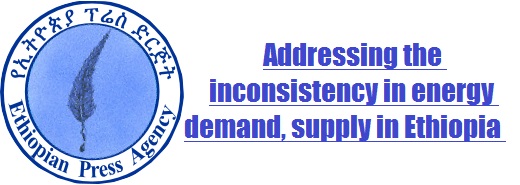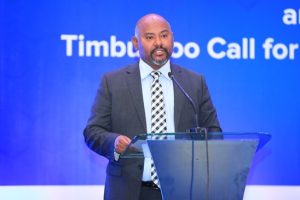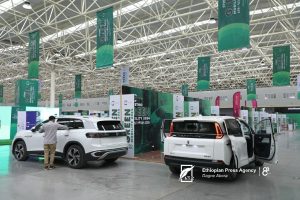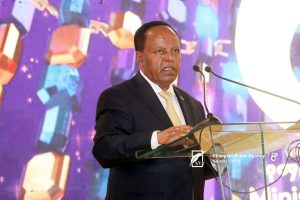
Ethiopia has become among the front investment destination countries with high development of the industry sector. The Second National Electrification program also aimed to reach 100 percent comprehensive and sustainable access of electricity to all citizens within five years, by 2025. To what extent is the country investing on the sector to solve the current power interruption and to supply enough power to meet the growing demand?
Frehiwot Woldehanna (PhD), Energy Sector State Minister with the Ministry told The Ethiopian Herald that government is working to provide sustainable power by focusing on increasing supply and widening sources of power, implementing public private partnership investment on the sector and transforming the sector to provide international standard service.
According to the state minister, up to now the country’s source of energy is limited to hydro power. But, now the country is investing in all alternative sources of energy like geothermal, solar and wind.Currently, over 15 energy projects from hydro, wind, geothermal and solar are underconstruction, bid process and on feasibility study. Except the hydro power projects most of them are executed through public private partnership projects. According to him, the government is working to eliminate power shortage by providing comprehensive power in the near future.
Dr. Frehiwot said that currently the country’s total power production is 4,300 megawatts, supplied from hydro and wind sources. Over 3,800 megawatts is generated from hydro power while 324 megawatts emanates from wind, he added. According to the state minister, the actual power that these sources vary from time to time especially the source of power emanating from wind is not constant due to the nature of the sources. Hence, Ethiopia is investing on alternative sources of power highly.
Mesfin Dabi, Senior Energy Analyst with the ministry also said that the country has planned to connect all social and economic sectors through grid and off grid electrification to provide sustainable universal electric access through its “light for all” program.
According to Mesfin, up to 2030, the country’s power demand is forecasted to grow on average by 13 percent annually considering the rapidly growing industry sector and every households demand in the future. To meet the demand, the country planned to provide 65 percent household demand from grid while 35 percent demand of households from off gird sources, mainly from the alternative sources of energy.
Dr. Frehiwot also said that due to the expansion of the industry sector and growing demand of households, with the goal of “light for all”, the country is investing more on the energy sector. In addition to investing in the power sector, the ministry is taking serious, deep and multidimensional sector transformation.
To strengthen energy production capacity, currently there are many projects on the energy sector. For example, on the hydro power sector, Grand Ethiopian Renaissance Dam (GERD), with over 6,000 mw capacity, the Genalle-Dawa power generating which is currently on its completion and almost starting holding water with 254 mw generating capacity. Koyisha hydro power projects with 2,160 mw capacity are already started projects which more than half of their construction is completed.
In addition, investment on alternative sources of energy like wind, geothermal and solar is aggressively developing. To grow the investment on the sector, the government is working to implement public private partnership especially on geothermal, wind and solar sectors.
Frehiwot stated that currently the Ayisha wind project, two geothermal projects, eight solar projects and five hydro power projects are on process of construction and bid. Other solar, wind and geothermal sources of energy are also on feasibility study, he added.
By 2025, the country planned to have 300-400 mini grid sources of energy which currently 12 pilot projects in 12 woredas across all regions are selected for mini grid installation. Then, it will expand to 25 woredas and at the end of the time to meet the goal. The sum of all the projects is aiming to reach 100% access to electric power to all citizens across the country, both Dr. Frehiwot and Mesfin stated.
The current power shortage which forced the country for electric rationing is due to weather change that leads for direct result of water shortage in dams. This happened due to the fact that the country’s power is dependent on water and investing on alternative sources of energy is crucial to the country to satisfy its demand, Dr. Frehiwot noted.
Mesfin also stated that as the country’s energy demand will grow by 13 percent up to 2030, the government is working to supply enough energy to meet the demand. Especially the growing industry sector needs more energy.
Mesfin also added that up to 2030, the country’s source of power will remain dependent on hydro-power which is forecasted to cover from 70- 80 percent of the country’s demand although the investment on other alternative sources of energy is also growing. According to him, hydro-power will take the lion’s share of the country’s energy due to high resource availability, experience of the country on this sector. Comparing with other sources the cost of hydro power per unit is low.
According to a document prepared by the ministry recently, the country’s energy installation capacity up to 2025 will exceed 10,000 megawatts. Dr. Frehiwot further noted that parallel with investing to increase installed capacity of the country, government focuses to transform the sector to provide universal standard service. The reform process may take two-three years and after the completion of the reform, the country will provide universal standard sustainable energy to its citizens and clients, he noted.
Both Dr. Frehiwot and Mesfin argued that Ethiopian projects built on cross Border Rivers are built focusing on sustainable benefit of Ethiopia and its neighbors and other beneficiaries of Ethiopian resources with deep scientific researches analyzing both internal and external effects. Only cooperation and working together is the solution to use the shared resources.
The Ethiopian Herald, June 15/2019
BY DARGIE KAHSAY





